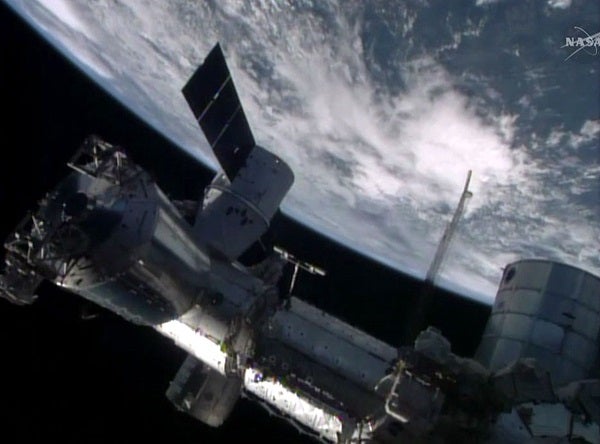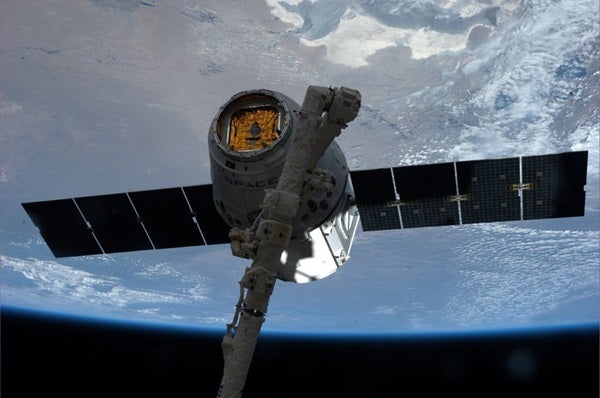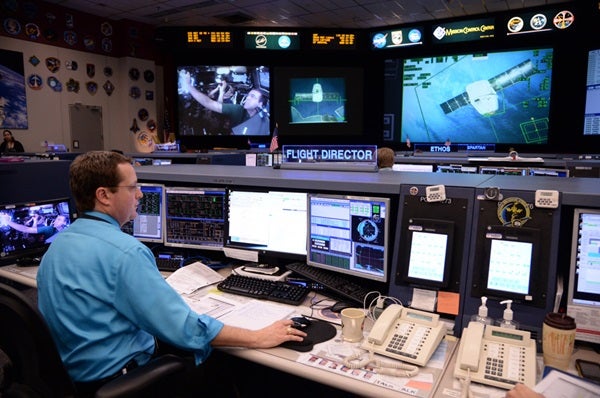With Dragon securely in the grasp of Canadarm2, the robotics officer at Mission Control remotely operated the arm to install the capsule to its port on the Earth-facing side of the Harmony module. Once Dragon was in place, Flight Engineer Rick Mastracchio monitored the Common Berthing Mechanism operations for first and second stage capture of the cargo ship, assuring that the vehicle was securely attached to the station with a hard mate. Second stage capture was completed at 10:06 a.m. EDT as the station flew 260 miles (420 kilometers) above Brazil.
Afterward, Wakata sent down his kudos to SpaceX and the ground teams as he remarked, “Congratulations to the entire ops team for the successful launch, rendezvous, and capture operation. The vehicle, the spacecraft was very solid and very stable. And the Canadarm2 was really solid, and it made it easier for us to capture.”
The crew spent much of the remainder of their workday pressurizing the vestibule between Dragon and the station and setting up power and data cables to prepare for the opening of Dragon’s hatch today, April 21.
After Dragon’s mission at the station is completed, Mission Control Houston will remotely unberth Dragon from Harmony and maneuver it to the release point with Canadarm2. The station crew then will release Dragon for its parachute-assisted splashdown and recovery in the Pacific Ocean.
Dragon launched atop a Falcon 9 rocket at 3:25 p.m. Friday, April 18, from Space Launch Complex 40 at Cape Canaveral Air Force Station in Florida. The SpaceX-3 mission is the company’s third cargo delivery flight to the station through a $1.6 billion NASA Commercial Resupply Services contract.












